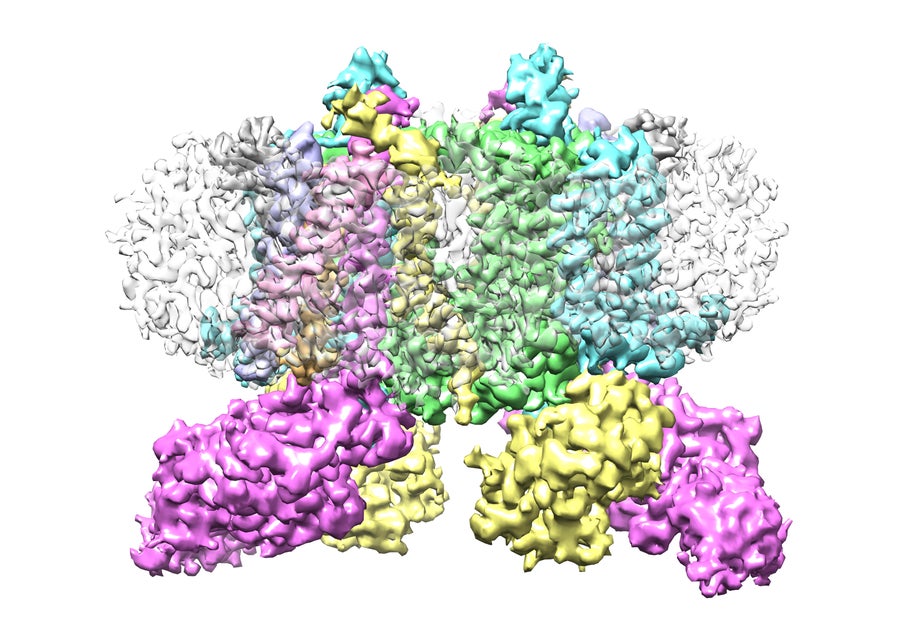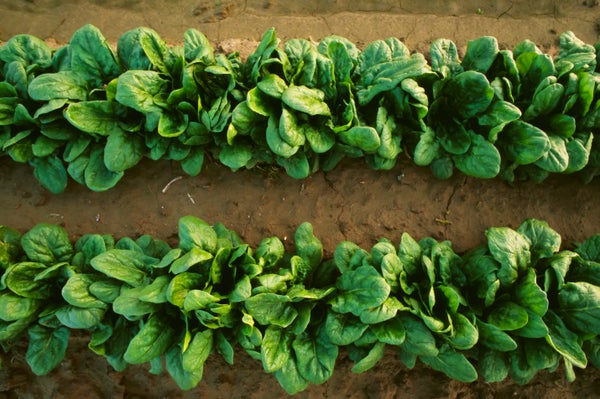A close-up look at a protein cog in the sugar-building machinery of spinach has taken us a step closer to enhancing food-crop yields. Using the finest-resolution imagery available from electron microscopy, researchers have traced the contours of a key complex in this machinery called cytochrome b6f.
Understanding the design of this protein complex could help scientists redesign it for greater crop efficiency in spinach or other plants, the research team says in a paper published on November 13 in Nature. The result could be more food produced more efficiently for an ever expanding global human population.
Getting these details on the structure of cytochrome b6f is “very exciting,” says Maria Ermakova, a postdoctoral researcher at the ARC Center of Excellence for Translational Photosynthesis at the Australian National University, who was not involved in the study. The findings do not fully answer persistent questions about how the complex functions, she says, but they set the stage for clarifying how its structure and activity are related.
On supporting science journalism
If you're enjoying this article, consider supporting our award-winning journalism by subscribing. By purchasing a subscription you are helping to ensure the future of impactful stories about the discoveries and ideas shaping our world today.
A known function of cytochrome b6f is its role in a photosynthesis “bottleneck,” says Matt Johnson, a biochemist at the University of Sheffield in England and co-senior author of the paper. As a site of slowdown in the sugar-building process, the complex is a target for efficiency tweaks. Johnson notes a couple of other studies focused on cytochrome b6f, which showed that boosting production of its component proteins translates into increased plant growth.

Protein complex b6f. Credit: University of Sheffield
The sun’s light fires up a plant’s sugar-making factories as the first step of photosynthesis, energizing electrons in the pigment chlorophyll. The plant then uses that captured energy to build sugars in a process that involves two sequential systems. These sugars are crucial to plant growth, so efficient photosynthesis can, in turn, mean an efficient and robust yield.
The cytochrome b6f complex bridges the two major systems of photosynthesis and handles the sun-energized electrons. Some of the electrons’ energy goes to directing protons, single positive charges, into a holding area to be stored, batterylike, until the plant needs them. A flow of these protons later powers the assembly of molecules that will supply the energy needed to build sugars.
Cytochrome b6f also commits the energized electrons to one of two fates: It can push them from the first major photosynthetic system and into the second, where the plant builds sugar. And it can cycle them back to drive the movement of more protons into storage.
Johnson and his colleagues used a technique called cryogenic electron microscopy, or cryo-EM, to get their zoomed-in view of cytochrome b6f. After purifying the complex from everyday spinach leaves, they placed a solution containing the purified complexes on a waffled carbon grid and plunged the entire thing into liquid ethane cooled to about –190 degrees Celsius.
By gently beaming electrons at the samples, the researchers created tracings of the complex that they merged into three-dimensional images. These images showed the component parts of cytochrome b6f down to the level of individual molecules. The process also allowed the investigators to capture the complex in different stages of its functions, showing the shape changes that might regulate what it does with electrons and protons.
For example, they found that chlorophyll has a molecular tail that may determine the fate of electrons in cytochrome b6f. They saw the tail interacting with the complex and taking two possible positions: In one, it blocked an electron-carrying molecule from settling into a site on cytochrome b6f. In the other, the tail had changed shape, making way for the molecule to bind so its electron would be accessible.
These and other structural details point to how cytochrome b6f changes shape in response to environmental signals, Johnson and his colleagues write. These changes can slow down photosynthesis when the plant needs to do so to avoid damage, such as during light overexposure.
But understanding these changes could also “provide more sophisticated targets for improvement” by taking the brakes off of this process, Johnson says. He and his co-authors write that manipulating photosynthesis will be crucial for boosting crop yields and ensuring sufficient food for the projected 9.7 billion people who will need it by 2050.
